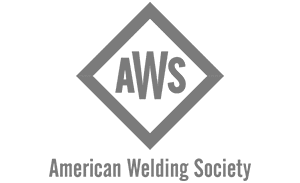Sanitary Jacketed Process Piping Assemblies- Things to Keep in Mind

Jacketed sanitary spools, elbows and a jacked sanitary ball type check valve
Here at Holland, we manufacture all kinds of sanitary components. We make everything from sanitary flow orifices to pump bases, manifolds to filter holders. It’s not often that any two items are exactly the same. We are the very definition of a job shop. One of the most common classes of sanitary fabrication we see are sanitary jacketed fittings, tubing, and valves. It’s a regular occurrence that we get a call from someone asking us to jacket some of their more difficult items- say a Waukesha seat valve. But when we ask about the other components- the sanitary spool pieces, elbows, etc.- the client is often quick to reply, “Oh, we have someone on site for that”. More times than not, this call is followed up by another call asking us to help them out with some of the pieces they thought would be a breeze. This re occurrence highlights the purpose of this post- to provide a brief overview of the challenges and common oversights people make when jacketing sanitary tubing, fittings, and various other components. As they say, the devil is in the details.
To begin, let’s talk about pressure testing. At Holland, we pressure test every single sanitary jacketed component we manufacture. Why is this important? Well, there are at least six welds on every jacketed component. This leaves plenty of places for a pinhole leak. After an integrator hangs each piece, the jumper hoses are installed and the lines are pressure/leak tested. If the system doesn’t hold pressure, going back and checking each spool piece, elbow, tee, and valve can be a huge time sink. The moral of the story is- pressure test each piece before you hang it. We do.
Normally, sanitary jacketed assemblies are ganged together, using jumpers to connect the heating/cooling media from piece to piece. We have seen several cases where customers had media flow rate problems from field fabricated jacketed assemblies. This was caused by the NPT jumper connectors being pushed too far in the jacket annulus, almost to the inner tube wall, effectively choking off the media flow. Make sure your fabricator properly copes the connector properly prior to welding, preventing unnecessary media pressure drop from assembly to assembly.
Another common over site when jacketing sanitary tubing is what steps are taken to ensure the inner product contact tube is centered in the outer utility tube. Especially for long, straight spool runs, it’s important that the product tube is centered within the jacket to ensure efficient, uniform heat transfer. To help achieve this, we always tack spacers to the product tube prior to welding on the outer jacket, ensuring the tube will remain centered at all times.
Most sanitary jacketed assemblies used Tri-Clamp connections. Jacketing as much of the process tubing as possible is obviously important. But that can create problems as well. At some point, you will need to get a clamp around each connection, so don’t weld the jacket too close to the ferrule so that the clamp will not go on. Also, we have seen several instances where the ferrules faces warped as they either too close to the weld or the welder put too much heat into the weld.
It’s also not uncommon to see people underestimate how much thin wall steel moves when the tremendous amount of heat required for fusion is applied. How does this present itself as a problem? Well, one component we often see people struggle with is with sanitary seat valves. When the valves are received, the valve stem is seated in the valve body and everything is clamped together and fits fine. When you go to put the jacket on, you have to remove the valve stem. When the jacket (often a crescent moon shaped jacket) is welded to the valve body, the seat where the stem sits can become distorted. To combat this, it is important to minimize the heat applied and also ensure you can correct any out of roundness that does occur. This will save major headaches down the road.
Those a just a few of the common over sites we see all the time when people decide there want to jacket their own sanitary tubing or fittings. Hopefully this post will help you with your next job. Or better yet, save yourself the headache and contact a Holland Sales Engineer today.






